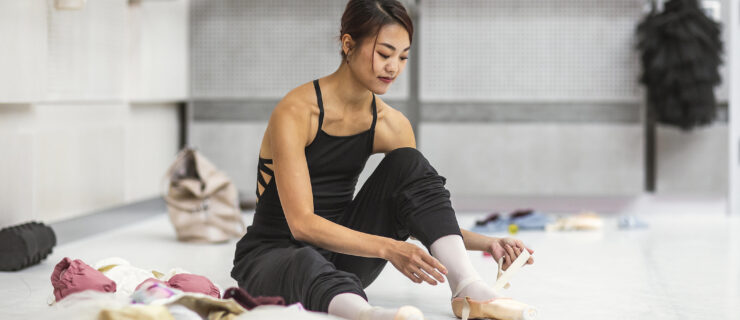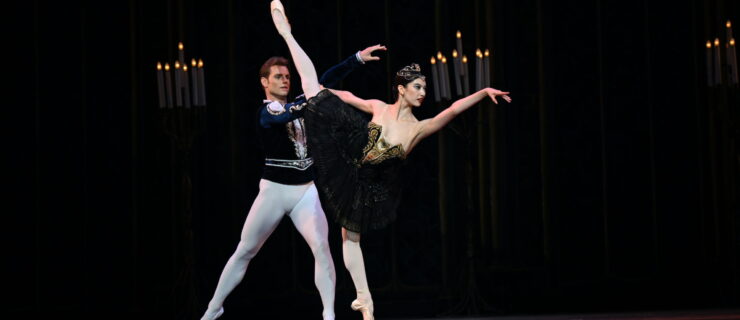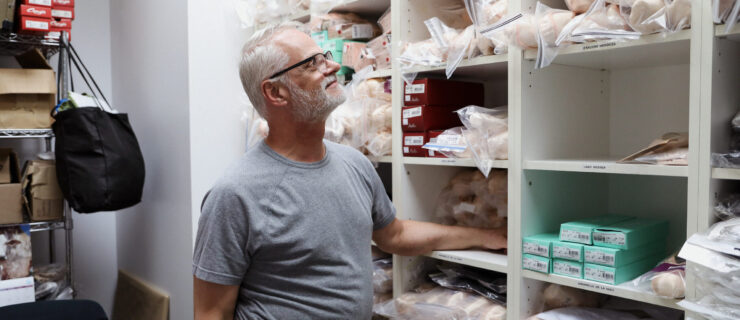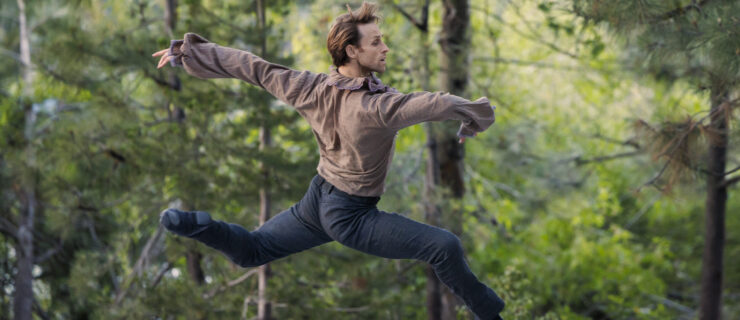Supply Closet
Like athletes, dancers demand durable and comfortable high-performance practicewear. Luckily, today’s dancewear companies stay on top of the latest technological advances in materials and seek input from professional dancers (see sidebar). The result is a range of apparel that brings stylish comfort. For a list of dance apparel companies that offer the latest innovations in fabric, check out the buy guide that follows.
Innovative Materials
“I can’t think of any sport that has not benefited by the introduction of new materials,” says Eliza Gaynor Minden, president and head designer of Gaynor Minden. “Dancers deserve the same benefits that athletes who do sports get, so why shouldn’t dancers enjoy the benefits of modern technology?”
New materials that are more durable and comfortable account for many of the remarkable improvements that have been made in dancewear over the past 30 years, particularly in leotards and tights. These days manufacturers are finding innovative ways to match form with function in materials that include cotton, spandex, nylon, microfiber, polyester, wool, acrylic—and even silk. “Now, it’s more about the fabric and how it fits to the body,” says Nina Vance, vice president of marketing for Discount Dance Supply and Natalie Dance Wear.
Many dancewear companies now use Tactel, a kind of nylon that was first introduced in 1983 for sportswear such as ski clothing. It has found its way into leotards and other types of bodywear for its softness, breathability, lightness and durability. It dries quickly, doesn’t pill and holds its color after many washings. When combined with spandex fibers, Tactel can have a second-skin feeling.
Susan Wexler, vice president of design for Danskin, says Tactel also features high compression, meaning it fits extremely close to the body, moving with the wearer without stretching out or losing its shape—another problem with leotards of yesteryear. “It holds everything in, but it doesn’t feel tight on you,” she says.
Other fabrics take into account the sweat factor. In January, Capezio introduced DanceDry, a treatment applied to the fabrics of several groups of garments to make them less absorbent. When the body perspires, the moisture is pulled away from the body and pushed toward the surface of the fabric, where it can evaporate, says Sylvie Mesnier, Capezio brands design manager. This way, clothing stays drier longer. “Dancers sweat, and when they are wet, they are cold. We needed to increase comfort, because if you feel good, you dance better,” says Mesnier, a former dancer herself.
Eurotard also released a new microfiber-based lining in all its leotards and bras this year that is both anti-bacterial and aids in moisture management. And, in 2007 Body Wrappers introduced the ProTech fabric in its Premiere collection of leotards. The fabric and a polyester lining work together to draw away moisture from the body. In addition, ProTech shares a range of benefits with Tactel and protects the skin from ultraviolet rays. It also possesses permanent bacteriostatic properties, which inhibit bacteria growth.
Tights have undergone innovative changes in materials and construction, as well. Mondor introduced its Wellness tights two years ago. During the dyeing process, Mondor applies Skintex solution to the tights. This solution has micro-capsules filled with vitamins and oils, a combination of ingredients that are said to relax and prevent premature aging of the skin, balance skin moisture and help regenerate skin cells, making it suppler. Friction created by the tights rubbing against dancers’ legs causes the microcapsules to open, releasing their contents onto the skin.
In 2007, Gaynor Minden introduced a microfiber wool tight that combines the warmth of wool and the lightweight, quick-drying comfort of micro-fiber. These footless tights are designed as an alternative to baggy and heavier legwarmers.
New materials can also be used to add arch support to tights, as in Danskin’s microfiber footed tights, available since 2007. A stronger type of ribbed Lycra spandex circles the instep. “It’s almost like a little mini-massage because the compression around the arch of the foot is so much greater than the rest of it,” says Wexler.
Silk is hardly a new material—the Chinese have been weaving it into fabric since 3,000 BC—and now manufacturers are using it in today’s warm-ups. One of the strongest natural fibers, silk is good for activities throughout the year. “When it’s cold out, the material will keep you warm. And if it’s warm out, it will keep you cool,” says Ashley Earle, director of marketing for Grishko, which has been offering Silktex knitwear since 2003. Gaynor Minden also offers sweaters, pants and shorts in silk.
The Power Of Celebrity
Dancers have been designing and making their own leotards for years. Patricia Barker and many others have even created companies around their designs, using their knowledge to fashion garments that will fit dancers right. Now the big companies are getting in on the action.
Bloch’s new Irina and Max Line debuted in June. American Ballet Theatre principals Irina Dvorovenko and Maxim Beloserkovsky worked with Bloch designers to address dancers’ unique needs. “With their years of professional experience, Irina and Max have put their own stamp on this warm-up wear, ensuring that it is both functional and stylish,” says Bloch designer Jozette Hazzouri, who also has her own line with Mirella called Jozette for Mirella. Vladimir Malakhov, Staatsballett Berlin artistic director and ABT principal, has a line of knitwear that is available through Chacott. And Natalie Dancewear regularly enlists dancers from major U.S. companies to provide input as part of its Corps de Natalie.
Allison Duke graduated from the University of Utah and is a member of Ballet New England in New Hampshire, where she teaches ballet.





